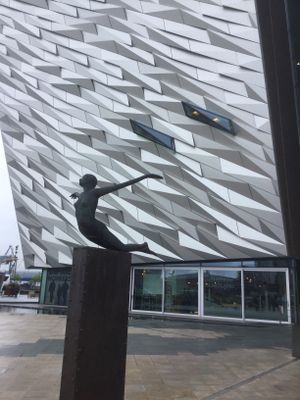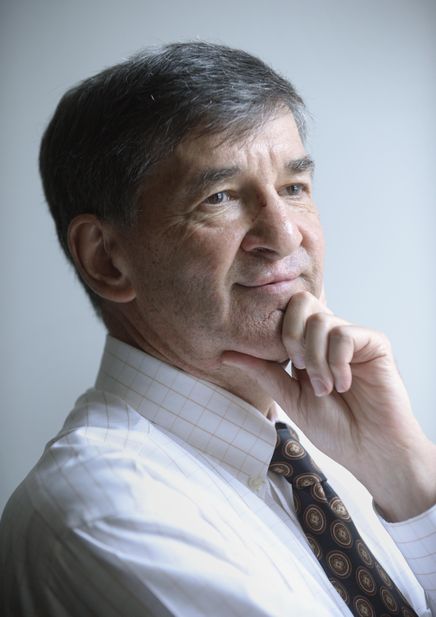Europe Tour 2017: Chapter 11
DUBLIN, Ireland - The last week has been a wonderful mix of everything Scottish and Irish.
Last Saturday in Scotland we visited the Rosslyn Chapel, located about eight miles south of Edinburgh. The chapel was founded in the mid-15th century by Catholics but later became a Scottish Episcopal Church. The chapel on a slight hill was featured in the best-selling novel The Da Vinci Code and its film adaptation. After our visit, we drove to our wonderful AirBnB cottage on a working farm in rural Saline.
Sunday featured a golf theme. We drove to St. Andrews to visit the world-famous golf course, where we walked the fairways and posed for pictures on the iconic Swilcan bridge. Some friends will be getting St. Andrews souvenirs. Merry Christmas in August.
My special travel partner and the woman who provides adult supervision on this trip, Claudia Erickson, plugged in the data for our rental car's satellite navigation system and made sure I turned on the correct exit at each busy roundabout. If you are new to driving on the left side of the road, a two-person team is the way to go.
Monday's sightseeing was devoted to the history and pride of Scotland, Robert the Bruce and William Wallace in Stirling. Wallace led the Scots to victory over the forces of England's King Edward I in the Battle of Stirling in 1297. Wallace was later captured and found guilty of high treason. He was hanged, disemboweled, beheaded and quartered. Revenge imposed by England was merciless. An impressive monument dedicated to Wallace overlooks Stirling and offers wonderful views if, as we did, you climb all 246 steps to the stop.
Robert the Bruce continued the fight leading to Scotland's independence and remains a national hero. He, too, is honored with an iconic statue in Stirling. One of my uncles was named Robert Bruce, perhaps a bow to our supposed Scottish heritage. I only couch it in those terms because we have not yet clearly identified our Scottish ancestors.
We flew to Belfast, Ireland on Tuesday for our next adventure. Titanic Belfast, the world's largest museum dedicated to the ill-fated passenger ship, was our sole objective on a short two-day visit. Little did we know that Belfast in its day was such a powerhouse of shipbuilding. The Titanic was built in Belfast and was the pride of the city until, well, you know. Many of the early newspaper accounts, owing to the slow and inexact communications systems of the day, reported that all the passengers were safe after the ship hit a massive iceberg.
On Thursday, we took a bus for the two-hour plus trip from Belfast to Dublin, where we will spend the next couple days sightseeing. Trinity College, the Book of Kells and anything related to Oscar Wilde are tops on our list. We continue to be amazed by the kindness of both Scotland's and Ireland's tourism and restaurant employees. Sensing we are confused tourists, they often approach us and ask where we are trying to go. I swear a staffer at Titanic Belfast would have walked us to the bus stop we needed if only we had asked.
It rains every day in Scotland and Ireland, it seems. But so far, the rains have been short lived and seem a small price to pay for the lush green fields and landscapes.
Footnote: I've now gone without a cell phone for a month, relying instead on my iPad whenever I find free wifi. Be jealous.

